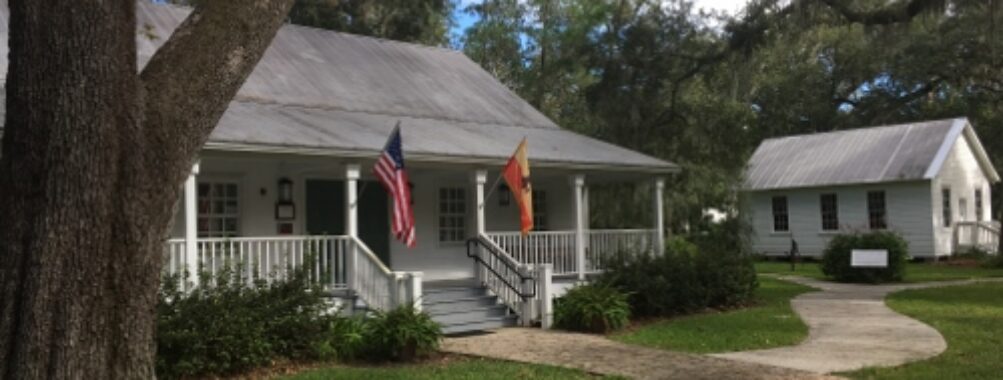
Mandarin Museum and Historical Society
“`html
Table of Contents
Description
The Mandarin Museum and Historical Society is one of those places that quietly sneaks up on you—in the best way possible. It’s tucked along the St. Johns River in Jacksonville’s Mandarin neighborhood, and somehow manages to feel both timeless and alive. The museum tells the story of the region’s past, from its early Native American roots to its days as a sleepy riverfront village and citrus hub. But what really sets it apart is how it weaves art, history, and community together in a way that feels personal. You don’t just walk through exhibits—you feel like you’re stepping into someone’s memory.
I remember the first time I wandered through. The air smelled faintly of the river, and the old wooden structures creaked just a little underfoot. It felt like walking through a scrapbook of North Florida’s history—handwritten letters, vintage photographs, and artifacts that seem to whisper stories if you linger long enough. There’s something deeply human about it all. The volunteers are locals who genuinely love sharing their town’s story, and you can tell. It’s not polished to perfection, but that’s what makes it real.
The museum also celebrates local artists, which gives it a fresh and evolving feel. Paintings, sculptures, and folk art pieces rotate through the gallery spaces, often reflecting the landscapes and people that make this part of Florida special. It’s not your typical “don’t touch anything” kind of museum—it’s intimate, approachable, and you’ll probably end up chatting with someone who has a personal connection to one of the exhibits.
Key Features
- Beautiful riverside location offering peaceful walking paths and scenic views.
- Exhibits covering the history of Mandarin, including its early settlers and cultural heritage.
- Rotating displays featuring local artists and craftspeople.
- Guided tours led by knowledgeable volunteers who share personal stories and historical context.
- Wheelchair-accessible facilities, including entrance, parking, and restrooms.
- Family-friendly environment with interactive displays for kids.
- Historic buildings on-site, including restored homes and artifacts from the 19th century.
- Peaceful outdoor areas perfect for a leisurely stroll or quiet reflection.
Best Time to Visit
If you’re planning a trip, spring and fall are the sweet spots. The weather’s comfortable, the humidity hasn’t yet hit full Florida mode, and the river breeze makes for a lovely afternoon walk. I’ve been in summer too, and while it’s hot, the shade of the old oak trees helps. Winter visits have their own charm—the air feels crisp, and the slower pace gives you time to really absorb the stories behind the exhibits.
Weekends tend to draw more visitors, especially when there’s a local event or art show happening. If you prefer a quieter experience, try going on a weekday morning. You’ll have space to wander and maybe even get into a long conversation with one of the docents—they’re a treasure trove of local lore.
How to Get There
Reaching the Mandarin Museum and Historical Society is fairly straightforward if you’re staying in or near Jacksonville. It’s located in the Mandarin area, which is on the city’s southern side near the St. Johns River. Driving is the easiest way to get there, and parking is free and accessible. If you’re using a rideshare or taxi, just make sure to mention that you’re heading to the museum grounds by the river—drivers sometimes miss the turn.
For those who enjoy a bit of exploring, the surrounding neighborhood is worth a wander. There are shaded sidewalks, small parks, and historic homes that hint at the area’s past. It’s not a place you rush through—it’s one you savor.
Tips for Visiting
First and foremost, give yourself time. This isn’t a museum you breeze through in twenty minutes. There’s a quiet rhythm to it, and if you slow down, you’ll notice the little details—the hand-carved furniture, the faded handwriting on old documents, the way the light filters through the trees outside.
If you’re traveling with kids, you’re in luck. The museum is surprisingly engaging for younger visitors, especially those curious about old tools, artifacts, and stories of life along the river. The volunteers are great with children and often tailor their stories to keep them entertained.
Bring a bottle of water and maybe a snack, since there’s no restaurant on-site. The nearby area has a few local cafés and bakeries, though, if you want to grab a bite afterward. And don’t forget your camera—the riverside views are stunning, especially around sunset.
Accessibility is well thought out here. Wheelchair users will find the paths and restrooms easy to navigate, and staff are always willing to lend a hand if needed.
If you can, time your visit to coincide with one of their special events or temporary exhibits. They often host art shows, heritage days, and seasonal programs that bring the history of Mandarin to life in unexpected ways. One time I went during a local storytelling event, and it was magical—people sharing memories of growing up in the area, laughter echoing through the old buildings. It reminded me that history isn’t just about the past; it’s about the people who keep it alive.
Lastly, support the museum if you can. It’s community-run and relies heavily on donations and volunteers. Even a small purchase from the gift shop or a kind word to the staff goes a long way. Places like this survive because people care, and you can feel that care in every corner of the property.
So, if you’re the kind of traveler who loves discovering spots that feel genuine—where history, art, and community meet in a quiet, meaningful way—the Mandarin Museum and Historical Society is worth your time. It’s not flashy, but it’s full of heart. And sometimes, that’s exactly what makes a place unforgettable.
“`
Location
Places to Stay Near Mandarin Museum and Historical Society
Find and Book a Tour
Explore More Travel Guides
No reviews found! Be the first to review!